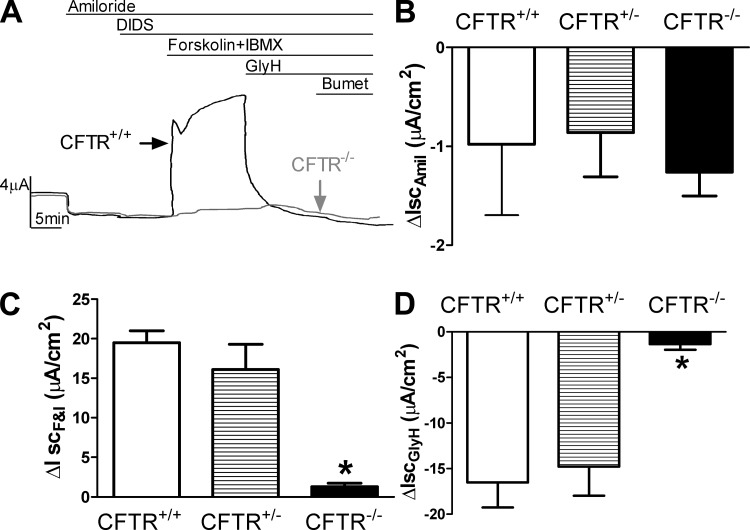Fig. 3.
Cl− transport is defective in CFTR−/− T2AECs but is restored with expression of one allele of CFTR. A: examples of short-circuit current (Isc) traces from WT (black) and CFTR−/− (gray) T2AECs in response to agents indicated above traces. B: changes in amiloride-sensitive current in CFTR+/+, CFTR+/−, and CFTR−/− T2AECs. C: responses to cAMP agonists (forskolin + IBMX) by CFTR+/+, CFTR+/−, and CFTR−/− T2AECs. D: changes in GlyH 101-inhibitable current in CFTR+/+, CFTR+/−, and CFTR−/− T2AECs. IscAmil, decrease in current after apical addition of amiloride; IscF&I, cAMP-stimulated current after apical addition of forskolin and IBMX to epithelia already in the presence of apical amiloride and DIDS; IscGlyH, decrease in current after addition of GlyH-101 to the previous solutions. Data in B–D are shown as means ± SE; n = 4–6; *P < 0.05 compared with CFTR+/+ and CFTR+/−.

